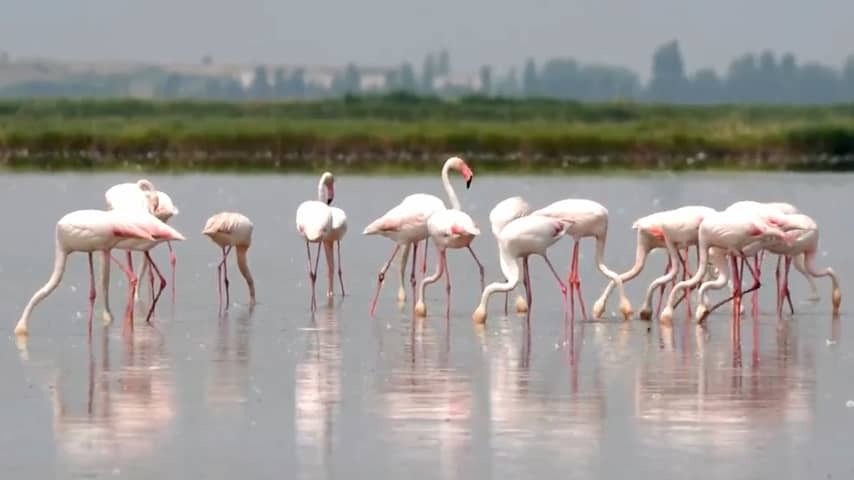
Italian risottorice farmers are suffering from flamingos that are churning up the soil of their flooded rice fields. Farmers in the province of Ferrara, located between Venice and Ravenna, are patrolling day and night to scare away the flamingos.
The birds are not targeting the rice plants, but when they churn up the soil in search of food, the plants are damaged. Flamingos eat snails, crustaceans, worms, and algae, among other things. Local rice farmer Enrico Fabbri says that he suffers up to 90 percent production loss in some fields.
Italian farmers are patrolling day and night to scare the flamingos away from their rice fields. The farmers honk with trucks, bang on barrels, and even fire small gas cannons. It doesn’t seem to help much. The noise often only causes the flamingos to move to another rice field.
Flamingos are relatively new to the province of Ferrara, but they seem to feel at home in the flooded rice fields where risotto rice is grown. The farmers flood their fields from late spring to early summer to allow newly planted rice seeds to germinate. Until the rice fields are drained, the flamingos pose a threat.
“From an environmental point of view, this is all wonderful, but we must not forget that rice is one of the most expensive and extensive crops,” says 57-year-old Massimo Piva, rice farmer and vice-chairman of the local farmers’ organization, to news agency AP.
‘Lower water level can ward off flamingos’
Roberto Tinarelli, chairman of a regional bird association, suggests a few animal-friendly solutions, such as surrounding the rice fields with tall trees or hedges.
Another solution is to lower the water level from 30 centimeters to 5 to 10 centimeters. “This is sufficient to allow the rice to grow, but considerably less attractive to flamingos, who want to splash around in the water,” says Tinarelli.
The flamingos probably come from former breeding grounds in the nearby valleys of Comacchio. The birds have been in a nature reserve there since 2000, after fleeing the drought in southern Spain. There has been no research into why these flamingos are now going further inland in search of food.